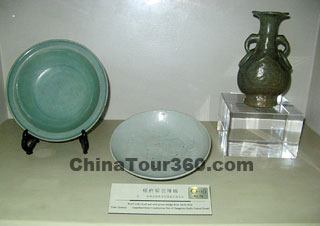In the latter period of the twelfth century, the nomadic ethnic tribes living in the north Mongolia Plateau never ceased fighting against each other. The brilliant Mongolian leader Genghis Khan, whose name was Tie Muzhen, united the varied ethnic tribes and established the Mongol Khanate in 1206.
Genghis Khan launched long-running wars on the surrounding areas. By the middle period of the thirteenth century, the Mongols had conquered North China, Central Asia and Russia and even reached the Indian River Valley to the south. The ambitious Genghis Khan set about expanding his territory to the China mainland. In 1234, the Mongols overthrew the Jin Kingdom and opened the door to unifying the China mainland.
In 1271, a grandson of Genghis Khan - Kublai Khan (also called 'Emperor Shizu') changed the dynasty title into Yuan, thus Yuan Dynasty (1271 - 1368) began with its capital at Dadu (present Beijing). Successfully, the Mongols conquered the Southern Song Dynasty in 1276 and finally set up a non-Han regime to rule over all of China. Historically, the Yuan Dynasty is a special period – the Mongolian interlude in Chinese history.
As the Yuan Dynasty possessed extensive territory including the present day Xinjiang, Tibet, Yunnan, most of the area of the present northeast China, Taiwan, the isles in the South China Sea, the Mongols managed to rule a complex group of peoples who inhabited the vast land. Due to the lack of the experience of administration, at first they used the Han political and cultural administration models. However, they created four social classes to discriminate against the Han. The first class was the Mongols themselves, who enjoyed the great privileges; the second was called the Semu people, who lived in the West Regions; the third class was made up of the Han people living in the North China; the last class called the Nan people living in the South China, who enjoyed the least privileges. This was a great obstacle to the amalgamation of different peoples and caused the later disintegration.
At the latter period of the dynasty, political corruption and the heavy economic burden of corvee caused a succession of peasant uprisings. In 1368, the leader of a Hongjin (red headband) peasant uprising Zhu Yuanzhang conquered Yuan's capital - Dadu - and ultimately frustrated Mongol troops. The Yuan Dynasty collapsed.
![]() Great Achievements
Great Achievements
Improvements were achieved in the transportation and commerce aspects. The Silk Road traversing Eurasia was flourishing; Dadu (present Beijing) became the terminal of the Grand Canal, which was entirely renovated during the Yuan Dynasty Meanwhile foreign trade was more prosperous than under the former dynasties and the government established trade relations with Japan and Korea. Moreover, Dadu, Hangzhou and Quanzhou became the three commercial metropolises during this period, and Quanzhou was still the biggest international trade port in the world.
 |
| Porcelain Bowl of the Yuan Dynasty |
At that time, there were many people contributing to the development of the foreign trade. The most famous Italian traveler Marco Polo made the journey to Dadu (now Beijing) during the reign of the Kublai Khan. The Rabban Sauma (1230 - 1294) at that time traveled to Europe and Western Asia; he was the first person in ancient China to visit the European countries. The travels greatly promoted the cultural and economic exchanges between China and countries abroad.
![]() Science
Science
Guo Shoujing (1231 - 1316), a famous scientist of the Yang Dynasty, compiled a book called Shoushi Calendar which recorded the periods of a year, similar to the present-day Gregorian calendar. He also created several instruments for astronomical observation and made contribution to scientific discoveries.
![]() Literature
Literature
The great achievement in literature of that period must be the Yuan Drama which enjoys the same fame as the Tang Poem and Song Lyric. Yuan's Drama was a comprehensive stage art which combined the singing, dancing, performing and speaking together. Simultaneously, the verse and the prose were created to form an integrated literary script. The non-dramatic songs (San Qu) soon became popular songs in the northern area of the Yuan Dynasty. The famous dramatist of the Yuan Dynasty was Guan Hanqing who created more than sixty literary scripts, among which the tragedy Dou E Yuan was the best-known.
![]() Crafts
Crafts
Huang Dao Po, a master-hand in the Yuan Dynasty's cotton textile industry, introduced advanced cotton textile techniques from Hainan to her hometown Songjiang (within present Jiangsu Province) and Songjiang soon became the center of the cotton textile industry at that time.
![]() Religion
Religion
Confucianism flourished during the Yuan Dynasty because the government took advantage of this region with the intention of maintaining domination over the Han society. And this reinstatement of religion really helped alleviating the national conflicts existing in that period.
![]() Go to the Ming Dynasty
Go to the Ming Dynasty







